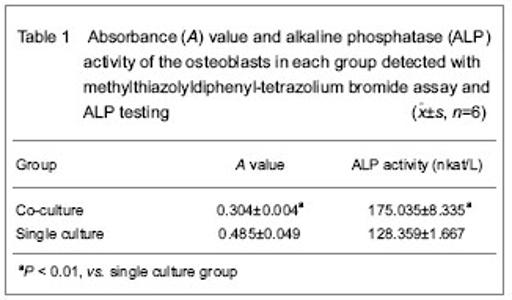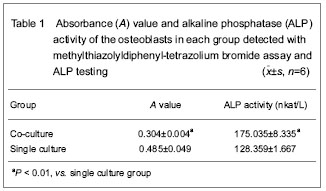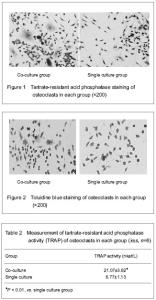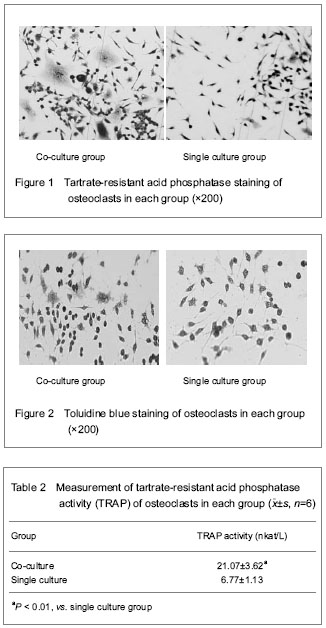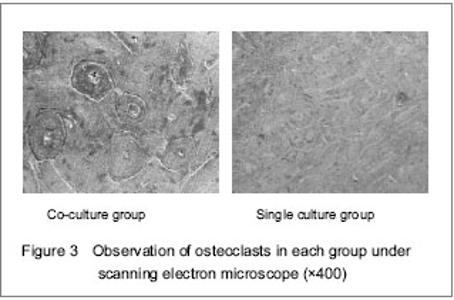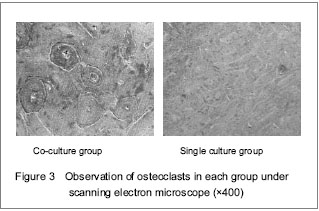| [1] |
Yang Caihui, Liu Qicheng, Dong Ming, Wang Lina, Zuo Meina, Lu Ying, Niu Weidong.
Serine/threonine protein kinases can promote bone destruction in mouse models of chronic periapical periodontitis
[J]. Chinese Journal of Tissue Engineering Research, 2021, 25(23): 3654-3659.
|
| [2] |
Huo Hua, Cheng Yuting, Zhou Qian, Qi Yuhan, Wu Chao, Shi Qianhui, Yang Tongjing, Liao Jian, Hong Wei.
Effects of drug coating on implant surface on the osseointegration
[J]. Chinese Journal of Tissue Engineering Research, 2021, 25(22): 3558-3564.
|
| [3] |
Jiang Shengyuan, Li Dan, Jiang Jianhao, Shang-you Yang, Yang Shuye.
Biological response of Co2+ to preosteoblasts during aseptic loosening of the prosthesis
[J]. Chinese Journal of Tissue Engineering Research, 2021, 25(21): 3292-3299.
|
| [4] |
Wei Qin, Zhang Xue, Ma Lei, Li Zhiqiang, Shou Xi, Duan Mingjun, Wu Shuo, Jia Qiyu, Ma Chuang.
Platelet-derived growth factor-BB induces the differentiation of rat bone marrow mesenchymal stem cells into osteoblasts
[J]. Chinese Journal of Tissue Engineering Research, 2021, 25(19): 2953-2957.
|
| [5] |
Guo Zhibin, Wu Chunfang, Liu Zihong, Zhang Yuying, Chi Bojing, Wang Bao, Ma Chao, Zhang Guobin, Tian Faming.
Simvastatin stimulates osteogenic differentiation of bone marrow mesenchymal stem cells
[J]. Chinese Journal of Tissue Engineering Research, 2021, 25(19): 2963-2968.
|
| [6] |
Ailimaierdan·Ainiwaer, Wang Ling, Gu Li, Dilidaer•Taxifulati, Wang Shan, Yin Hongbin.
Effect of transforming growth factor-beta3 on the proliferation and osteogenic capability of osteoblasts
[J]. Chinese Journal of Tissue Engineering Research, 2021, 25(17): 2664-2669.
|
| [7] |
Luo Yicai, Li Hao.
Effect of enhanced aryl hydrocarbon receptor expression on inflammatory response and healing of alveolar bone defects in diabetic rats
[J]. Chinese Journal of Tissue Engineering Research, 2021, 25(14): 2166-2171.
|
| [8] |
Wu Yukun, Han Jie, Wen Shuaibo.
Mechanism of Runx2 gene in fracture healing
[J]. Chinese Journal of Tissue Engineering Research, 2021, 25(14): 2274-2279.
|
| [9] |
Chen Jufang, Tian Yulou, Hao Xin.
Role and potential of adipose-derived stem cells in cranio-maxillofacial bone regeneration
[J]. Chinese Journal of Tissue Engineering Research, 2021, 25(13): 2087-2096.
|
| [10] |
Gu Jingjing, Zhou Rui, Yang Tingting, Yang Xiaoping, Xu Fei, Zheng Bo.
Supporting effect of human skeletal muscle-derived myoendothelial cells on hematopoietic stem/progenitor cells in vitro
[J]. Chinese Journal of Tissue Engineering Research, 2021, 25(1): 50-55.
|
| [11] |
Zhao Chuntao, Qing Mingsong, Yu Langbo, Peng Jiachen .
Meta-analysis of total knee arthroplasty guided by kinematic
alignment and mechanical alignment
[J]. Chinese Journal of Tissue Engineering Research, 2020, 24(9): 1435-1442.
|
| [12] |
Chen Qiang, Zhuo Hongwu, Xia Tian, Ye Zhewei .
Toxic effects of different-concentration isoniazid on newborn
rat osteoblasts in vitro
[J]. Chinese Journal of Tissue Engineering Research, 2020, 24(8): 1162-1167.
|
| [13] |
Zhang Cong, Zhao Yan, Du Xiaoyu, Du Xinrui, Pang Tingjuan, Fu Yining, Zhang Hao, Zhang Buzhou, Li Xiaohe, Wang Lidong.
Biomechanical analysis of the lumbar spine and pelvis in adolescent
idiopathic scoliosis with lumbar major curve
[J]. Chinese Journal of Tissue Engineering Research, 2020, 24(8): 1155-1161.
|
| [14] |
Xu Guofeng, Li Xuebin, Tang Yifan, Zhao Yin, Zhou Shengyuan, Chen Xiongsheng, Jia Lianshun.
The role of autophagy in ossification of the human ligamentum
flavum
[J]. Chinese Journal of Tissue Engineering Research, 2020, 24(8): 1174-1181.
|
| [15] |
Xu Nuo, Cao Zhen, Li Xiaojie, Shi Chun.
MicroRNA-21 regulates proliferation and differentiation of
osteoclasts in periodontitis
[J]. Chinese Journal of Tissue Engineering Research, 2020, 24(8): 1225-1230.
|
